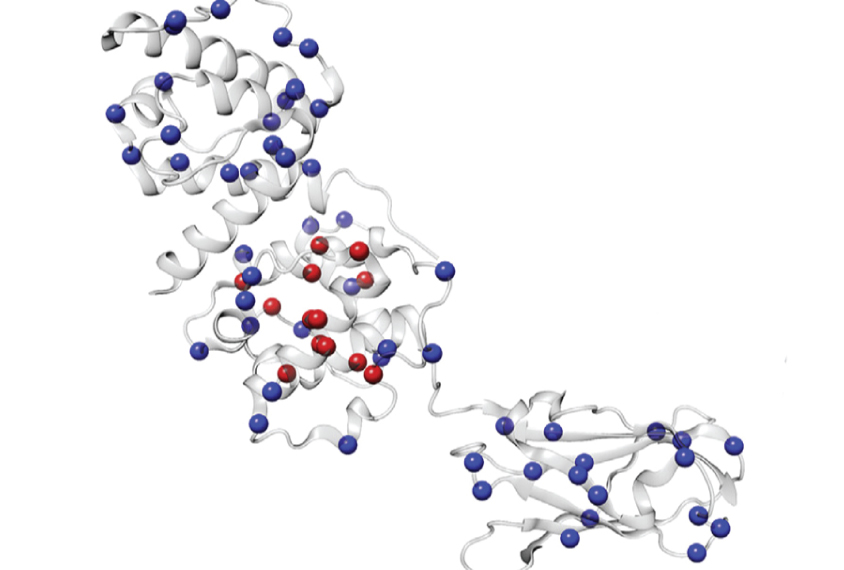
Web-based tools reveal mutations’ effects on proteins
Two new online resources help researchers predict how mutations alter protein structure.
Two new online resources help researchers predict how mutations alter protein structure.
One plots the effects of mutations on regions of a protein1. The other identifies mutations that affect the sites where proteins interact2.
To build the first resource, researchers created a program that determined how 28 million point mutations — those affecting a single DNA letter — map onto 22,761 protein structures. Most of these structures are computational models. The mutations come from three databases that include information on conditions linked to those mutations.
Using a second algorithm, the researchers found that the effects of neutral mutations are evenly distributed throughout proteins. By contrast, the effects of mutations linked to specific conditions cluster in particular parts of a protein. These parts are likely to be critical to the protein’s function.
About 70 percent of these clusters were unknown. They may hint at mechanisms underlying conditions, or point to targets for therapies.
The data and analysis appear online and were published in March in the American Journal of Human Genetics.
Contact points:
The second tool matches mutations to their effects on regions where proteins interact.
The researchers first compiled a set of thousands of protein interactions. For 94 percent of these interactions, no information existed on the parts of the proteins that interact. The researchers used the few known interaction points to develop a program that predicts the unknown ones.
The program predicted 185,957 previously unknown interaction interfaces for various human and animal proteins.
The researchers also tested 1 percent of the predictions in more than 2,000 cell-culture experiments; they created genes with known mutations in the parts of the proteins that interact. Mutations in these regions disrupt protein interactions significantly more often than mutations located elsewhere on the proteins, the team found.
The tool, Interactome INSIDER, includes the predicted and known interfaces along with nearly 2 million mutations associated with specific conditions. Users can search for an individual protein to see its interaction partners and their interfaces. They can also map mutations of interest onto proteins.
The tool was described in the February issue of Nature Methods.
References:
Recommended reading

New organoid atlas unveils four neurodevelopmental signatures

Glutamate receptors, mRNA transcripts and SYNGAP1; and more

Among brain changes studied in autism, spotlight shifts to subcortex
Explore more from The Transmitter
Can neuroscientists decode memories solely from a map of synaptic connections?

AI-assisted coding: 10 simple rules to maintain scientific rigor
